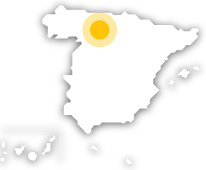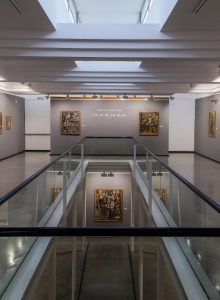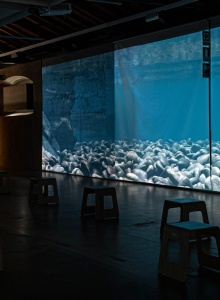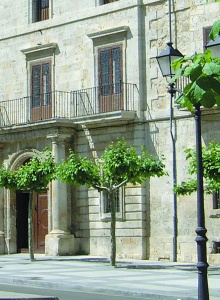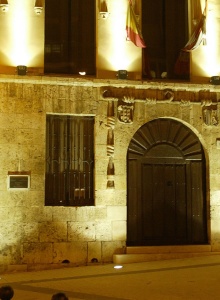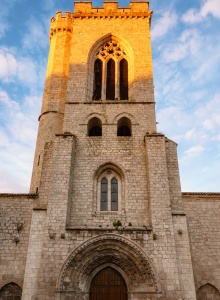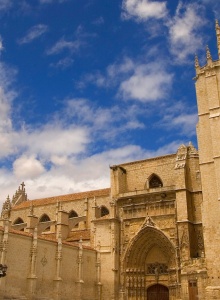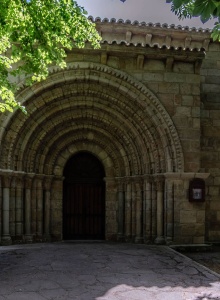The river Carrión runs through the extensive plain of Tierra de Campos until it reaches Palencia.
The capital, which has a interesting collection of monumental sites, is the starting point for a tour of the most significant route of the Romanesque style in Spain.
What was once Roman Pallantia has witnessed major historic milestones. A crossroads and an imporant centre of textile manufacturing in other ages, Palencia lived its period of greatest splendour in the Middle Ages. During the reign of Alfonso VIII, the capital became a royal residence and in 1208 the first Spanish university was founded here.The city is watched over by the imposing sculpture of Cristo del Otero which, standing 20 metres tall, dominates the area from one of the hills surrounding the city.Calle Mayor, Palencia's main thoroughfare, is the backbone of the city running north to south and boasts distinguished façades and a great many shops. To one side of this major road stands the arcaded Main Square, the site of the façades of the City Hall, from the 19th century, and the church of San Francisco, a Franciscan building from the 13th century.The surrounding streets lead towards the “unknown beauty”, which is how Palencia's Cathdral (14th century) is known. The austerity of its Gothic façade conceals a wealth of art inside. Among its most prized treasures are a valuable plateresque reredos (16th century) and the crypt of San Antolín, with remains of the Romanesque and Visigothic temples which stood on the same spot centuries earlier. Lastly, inside the cloister, a visit can be made to the Cathedral Museum, which contains works by painters such as El Greco and Zurbarán.Next to the Cathedral is the Episcopal Palace, site of the Diocesan Museum, whose collection includes pieces of relgious art from several churches in Palencia. Palencia's extensive choice of culture is completed with other premises, such as the Archaeological Museum, the Victorio Macho Museum or the Díaz-Caneja Foundation, this latter institution devoted to contemporary art.Another traditional image of Palencia is provided by the church of San Miguel. Its openwork tower from the 13th century stands above the structure of Romanesque origin finished in pointing.The banks of the Carrión is one of Palencia's major recreational areas, with extensive green spaces such as Sotillo de los Canónigos.Gastronomy and surrounding areaThe capital can act as a starting point for the well-knownRomanesque route of Palencia, an itinerary which allows you to see the rich medieval heritage which arose in many cases around the Pilgrim's Road to Santiago de Compostela. More than fifty buildings are preserved almost intact, outstanding among which is the monastery of Santa María, in Aguilar de Campoo. In the town of Carrión de los Condes you will find beautiful buildings such as the convent of Santa Clara (13th century) and the churches of Santa María del Camino and Santiago. Other Romanesque buildings which can be visited on this route are the church of San Martín (Frómista), the hermitage of San Pelayo (Perazancas), the church of Santa Eufemia (Olmos de Ojeda) or the monastery of Santa María de Mave.The route also provides the opportunity to enjoy the facilities offered by the Parador de Cervera de Pisuerga, located near the Picos de Europa mountains. The excellent ingredients produced in the province form the basis of Palencia's culinary tradition. Among the most emblematic dishes are lechazo asado (roast lamb) and pichón estofado (stewed pigeon). The vegetables and garden produce of the fertile fields are use to make tasty vegetable stews. Other specialities of the region are pork products Saldaña beans and sheep's cheese. To round a meal off, you could try the famous biscuits from Aguilar de Campoo, the sweets from Osorno or leche frita (made from milk, eggs, flour and sugar). Not forgetting to accompany any of these dishes with the excellent Designation of Origin Cigales wines.

